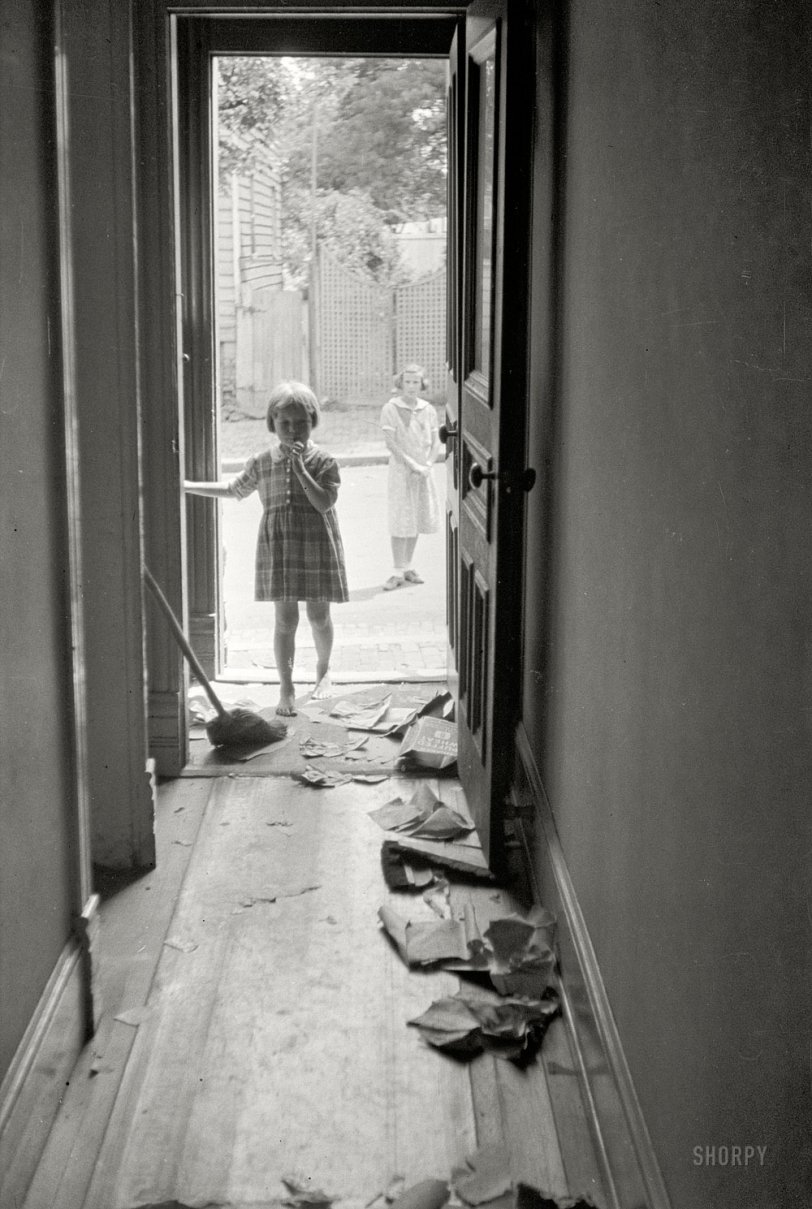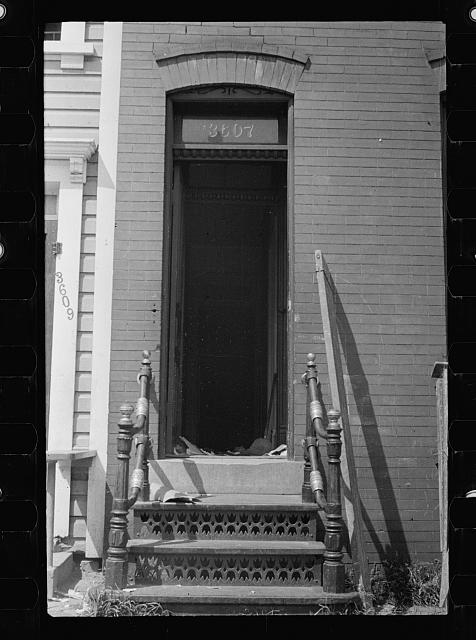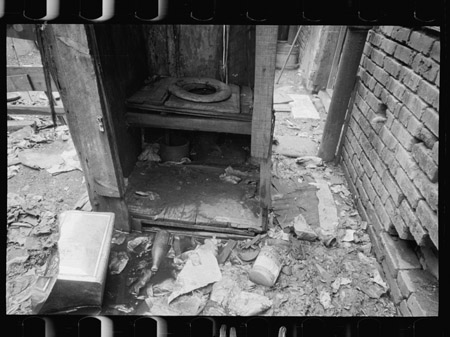


Framed or unframed, desk size to sofa size, printed by us in Arizona and Alabama since 2007. Explore now.
Shorpy is funded by you. Patreon contributors get an ad-free experience.
Learn more.

- Freeze Frame
- Texas Flyer wanted
- Just a Year Too Soon
- WWII -- Replacing men with women at the railroad crossing.
- Yes, Icing
- You kids drive me nuts!
- NOT An Easy Job
- I wonder
- Just add window boxes
- Icing Platform?
- Indiana Harbor Belt abides
- Freezing haze
- Corrections (for those who care)
- C&NW at Nelson
- Fallen Flags
- A dangerous job made worse
- Water Stop
- Passenger trains have right of way over freights?
- Coal
- Never ceases to amaze me.
- Still chuggin' (in model form)
- Great shot
- Westerly Breeze
- For the men, a trapeze
- Tickled
- Sense of loneliness ...
- 2 cents
- Charm City
- What an Outrage
- Brighton Park
Print Emporium
Poor White Hallway: 1935

September 1935. Washington, D.C. "Poor white hallway, Georgetown. Seldom do these people have even the desire to clear up rubbish, and the broom shown here seems to be out of place." 35mm nitrate negative by Carl Mydans. View full size.
Alumni House
The gate and open space leads to a courtyard behind the Alumni House of Georgetown University, which is paved by bricks inscribed with alumni names. My great-grandparents lived a few doors down from that gate, along with their 10 children including my grandmother, from around 1910 to around 1915 when they moved to another Georgetown house near the corner of 34th and O Streets. My great-grandmother's brother, a fireman, lived across the street from her with his 8 children from around 1908 to around 1915, just a few doors down from the house in this photo. During the time my ancestors lived in this neighborhood around Holy Trinity Catholic Church, the residents were hardworking firemen, shop clerks, policemen, woodworkers (like my great-grandfather) and other tradesmen. It was in the 1930s that Georgetown fell into hard times and began to look "slum-like" (except the large estates that have been there since colonial days), and my great-grandparents moved to a large house on Conduit Road (now MacArthur Boulevard) in the Palisades neighborhood. Georgetown came back into favor in the 1950s, and has remained so since then. It is now some of the priciest residential real estate in D.C. (too bad my ancestors didn't keep one or two of their homes for their descendants!).
Across the street
Behind the girls there is a gap in the buildings (service alley? yard?) If you move 180 degrees from the current Google street image you will see the "gap" is still there. To me, seeing some of the same buildings still there is neat, but for an open area to survive unbuilt! There is even a gate (metal now) where there used to be a wooden gate. An open space preserved!
Another look
Maybe that Georgetown housewife was nearly finished sweeping out the front hall when the *#%!!*# photographer barged in!
Both sides of squalor
Spin google street view around and you can see that the ramshackle fence behind the girls is now a fine brick-and-wrought-iron gate.
Isn't it strange
These once-dilapidated dwellings now "zillowed" as being worth a million and a half after refurbishing and spiffing up are duplicated in most cities across the country, while the once well-kept, safe, tree-lined neighborhoods in which many of us grew up in the 1940's and 50's have become blighted, crime-infested, run-down slums today. Seems as though they have to hit bottom before they can rise to the top. The girls in this photo obviously realize the place needs cleaning up but seem mystified as to what to do about it. Human behavior can be puzzling.
No Prospects of a bright future
You put people in a situation where there is no hope and most will not care. People take a lot for granted today. That broom was used to sweep the steps outside probably.
$1,500,000
Zillow estimates 3607 O Street NW as being worth a million five.
O my
That doorway's still there - 3607 O Street, in the penumbra of Georgetown University. It houses the special programs of the university's Center for Language Education and Development. According to Boyd's Directories, it was the home address of laborer Nicholas Crowley in 1887 and molder James H. Reed in 1908.
Priorities
Both of the "poor white" girls in the photo seem to be dressed with more care than many children today, regardless of their socioeconomic status.
Poor white doorway
Here's the next frame on the roll.

Irony
I don't think poor people are allowed in portions of Georgetown anymore.
Clean sweep
I see the door is propped open and my bet is that Ma or Pa or big sister was in the middle of sweeping up when ol' Carl came by to create some propaganda. Don't miss that Puffed Wheat box. On the other hand, maybe they're slobs.
A little harsh there, Carl
I don't know the exact circumstances of the residents, but I think Mydans may have been too judgmental. If this was an apartment building, and the hallway a common area, then the residents might have considered cleaning it to be the building superintendent's responsibility. Just my $.02.
Rental property
I used to manage rental property. They don't have to be poor for a hall to look like that.
The more things change
It's difficult to imagine why people choose to live this way. Either of the children in that picture could easily have used the broom to clean up the mess. My children had cleaning responsibilities from the age of five. The difference today is that those living in conditions such as the ones pictured here have cell phones, laptops, and big-screen plasma TVs with dish or cable.
You should see the rest!
This one of around 600 pictures that Carl Mydans took in the slums around Capitol Hill and Georgetown. Some of these places were really squalid. Backed up sewers, decrepit privies, rats.

























On Shorpy:
Today’s Top 5